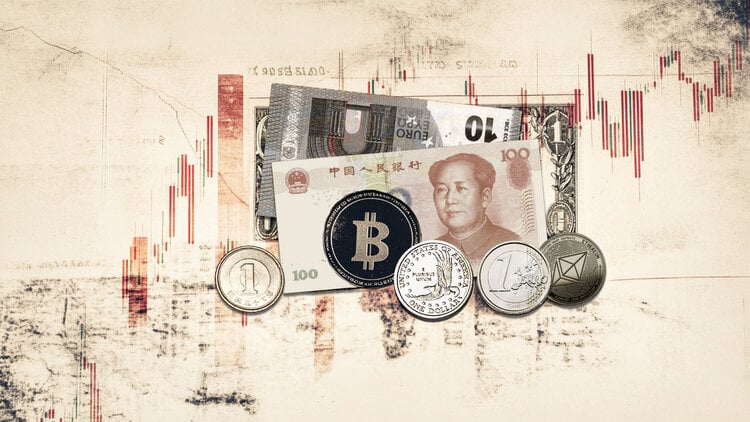- The Mexican peso rises against its most traded peers as political risk impacts its counterparties.
- The Dollar strengthens as a result of the increased probability of Trump winning the election.
- Strong showing by far left in French election raises concerns about fiscal outlook impacting Euro
The Mexican Peso (MXN) is trading higher against its key peers on Monday amid a subdued market. Carry flows continue to favor the Mexican Peso due to the attractiveness for foreign investors of the relatively high interest rates offered in Mexico.
The Peso is particularly strong against the Euro (EUR), which is falling amid renewed political concerns following the final results of Sunday’s French legislative elections. Although centrist and left-wing parties managed to prevent the far-right National Rally (RN) party from winning a majority, no party has enough seats to govern, suggesting the risk of long-term political paralysis, according to Reuters.
Meanwhile, the US Dollar is finding some support from the increasing likelihood of former President Donald Trump winning the November presidential election as President Joe Biden is seen as likely to resign due to concerns about his fitness for office. Trump’s tax cuts and spending policies are seen as inflationary and will therefore likely keep US interest rates elevated.
At the time of writing, one US Dollar (USD) buys 18.03 Mexican Pesos, EUR/MXN is trading at 19.55 and GBP/MXN at 23.12.
Mexican Peso Trades Higher Amid Heightened Political Risk
The Mexican Peso is trading higher against the Euro on Monday as the shared currency weakens after French election results raised concerns about France’s future fiscal position. Tactical voting means the far-left Nouveau Front Populaire (NFP) party won the most seats (182), followed by the centrist Ensemble alliance (168) and the far-right National Rally party (143) in third place, according to Reuters.
With no party securing more than the 289 needed to form a government, an uneasy coalition will be needed, likely between Macron’s centrists and the NFP, which will likely take a long time to agree, leading to political paralysis, according to Reuters.
Although the major concern of a far-right victory has been averted, markets are now again concerned about the impact of a future far-left-dominated government on the economy.
Trump factor keeps US dollar supported
The Mexican Peso continues to rise against the US Dollar, but at a much more moderate pace, as political risk supports the US currency despite a series of weak US data that advances expectations that the Federal Reserve (Fed) will cut interest rates.
The increasing likelihood of Donald Trump becoming the next US president is leading to a rise in US Treasury bond yields, which are positively correlated with the dollar. Given his inflationary policies, interest rates could remain high in the US, fuelling continued foreign capital inflows and supporting the USD.
The US dollar had been weakening after a series of US data releases indicating that the economy is cooling. The ISM services sector Purchasing Managers’ Index (PMI) for June fell into contraction territory, and labour market data has also been below expectations.
While the US Nonfarm Payrolls for June on Friday showed a higher-than-expected 206,000 workers joining the economy, the previous month’s result was revised sharply downward and the unemployment rate rose to 4.1% when economists had expected it to remain at 4.0%. It was the third consecutive rise in unemployment in as many months.
Technical Analysis: USD/MXN stabilizes
USD/MXN slides towards key June 24 low at 17.87.
More broadly, the pair may be entering a sideways trend, with the bottom at the aforementioned June 24 low and a top at the 18.50 level, although it is still a bit early to be sure.
USD/MXN 4-hour chart
The pair is likely to find support at the June 24 low, but a decisive break below 17.87 would suggest that a new downtrend is starting, with the next target at 17.50 (50-day SMA).
A break above 18.59, however, would signal a continuation to 18.68 (June 14 high), followed by 19.00 (June 12 high). A break above 19.00 would provide strong confirmation of a resumption of the short- to medium-term uptrends.
The direction of the long-term trend remains uncertain.
Economic indicator
Nonfarm payrolls
The most important result contained in the employment situation report is the monthly change in non-farm payrolls published by the US Department of LaborThe report publishes estimates of job creation for the previous month and revisions to the data for the previous two months. Monthly changes in payrolls can be very volatile and the release of this report generates high volatility in the dollar. A result above the market consensus is bullish for the dollar, while a result below expectations is bearish.
Latest Post: Fri Jul 05, 2024 12:30 PM
Frequency: Monthly
Current: 206K
Dear: 190K
Previous: 272K
Fountain: US Bureau of Labor Statistics
The US monthly employment report is considered the most important economic indicator for currency traders. Released on the first Friday following the reported month, the change in the number of employees is closely linked to the overall performance of the economy and is monitored by policymakers. Full employment is one of the Federal Reserve’s mandates and it considers the developments in the labor market when setting its policies, which affects currencies. Despite several leading indicators shaping estimates, Nonfarm Payrolls tends to surprise markets and trigger substantial volatility. Actual figures that beat consensus tend to be bullish for the USD.
Source: Fx Street
I am Joshua Winder, a senior-level journalist and editor at World Stock Market. I specialize in covering news related to the stock market and economic trends. With more than 8 years of experience in this field, I have become an expert in financial reporting.








